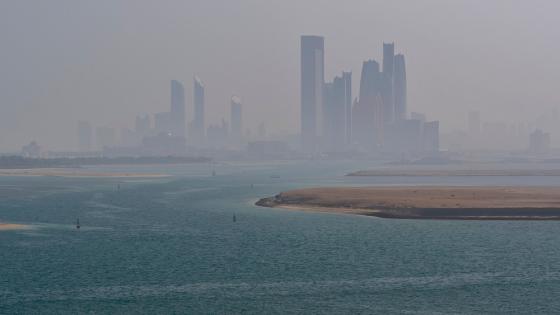The findings of the second National Air Pollutant Inventory Study were released today by the Ministry of Climate Change and Environment. The objective was to undertake a thorough examination into the volume of emissions of air pollutants coming from different sectors of the nation. This edition’s statistics came from emissions that were tracked until 2019.
The study is a component of the Ministry of Climate Change and Environment’s initiatives to enhance air quality through a number of projects that will be implemented as part of the UAE Environment Policy. One of its main objectives is to improve air quality in order to save society from the negative health impacts brought on by its decline. This will increase society’s wealth and well-being and provide a better environment.
In order to prepare for the study, the Ministry of Climate Change and Environment collaborated with 128 strategic partners and relevant specialised organisations from the federal government, local governments, the semi-governmental sector, and the private sector. These meetings and workshops were bilateral and consultative in nature.
The National Air Pollutant Inventory Study intends to measure emissions from key industries such as agriculture, waste management, transportation, construction, and industrial processes and product usage (IPPU) as well as to update inventory lists of air pollutant emissions. In order to create programmes that improve air quality, it also seeks to comprehend and analyse the types of contaminants, emissions, sources, and rates.
The Ministry of Climate Change and Environment is working with numerous partners to find workable solutions for various environmental and climate challenges in the nation, according to Essa Al Hashmi, Assistant Undersecretary for the Sustainable Communities Sector and Acting Assistant Undersecretary for the Green Development and Climate Change Sector. One of the most significant concerns in our quest to enhance the standard of living and foster a wholesome environment for society is air quality.
The National Air Pollutant Inventory Study, he continued, “identifies the true sources of air pollution emissions in the nation across all sectors and assesses the effectiveness of environmental regulations in achieving their objectives. The study uses the most up-to-date global technologies for monitoring air contaminants to get accurate results. In order to develop policies and plans aimed at improving air quality on the basis of sound and realistic foundations, this will give updated facts and statistics that outline the current situation. This will ensure the effectiveness of future policies and projects and their compatibility with the present situation.
Results
The National Air Pollutant Inventory Study’s principal findings showed that changes in estimated emissions for the majority of pollutants between 2015 and 2019 were mostly caused by an increase in overall activity levels. It should be emphasised, nevertheless, that advances in the oil and gas industry’s operations, levels of natural gas consumption, and an increase in sulphur extraction units all contributed to a large decrease in predicted sulphur dioxide emissions.
The study’s findings also showed that the implementation of the Euro 4 standard for new vehicles in 2018 led to a reduction in nitrogen oxide emissions from the transportation sector. As a result of steady emissions in the energy generating sector, the results also showed stable nitrogen oxide emissions between 2015 and 2019. It is anticipated that these pollutants will drastically decline as a result of operating the Barakah nuclear power plant for the production of clean, non-polluting energy.
The survey also showed that the industrial and material use sector produced the greatest amount of carbon monoxide emissions, followed by the transportation sector, notably light automobiles. Construction and demolition operations were mostly responsible for the emissions of particulate matter (PM) with sizes less than 10 microns and 2.5 microns (PM10, PM2.5). The findings also showed that the main sources of ammonia emissions in the nation were light automobiles and fertilisers.
Examine the implementation process
The National Air Pollutant Inventory Study was focused on estimating the emissions rates of carbon monoxide, nitrogen oxides, sulphur dioxide, particulate matter with a diameter less than 10 microns, particulate matter with a diameter less than 2.5 microns, and non-methane volatile organic compounds, as well as those coming from waste.
Construction and demolition work were included in the industrial processes and product usage sector, railroads were included in the energy sector, and ammonia was introduced as a pollutant in this edition of the study.
The EMEP/EEA Air Pollutant Emission Inventory Guidebook 2019 is an internationally recognised reference manual for such studies, used by European, North American, Asian, and other countries. The Ministry of Climate Change and Environment relied on the methodologies and emission factors specified in it to calculate emissions rates from different sectors. The manual offers open approaches that make it possible to compare findings with those from other nations.





